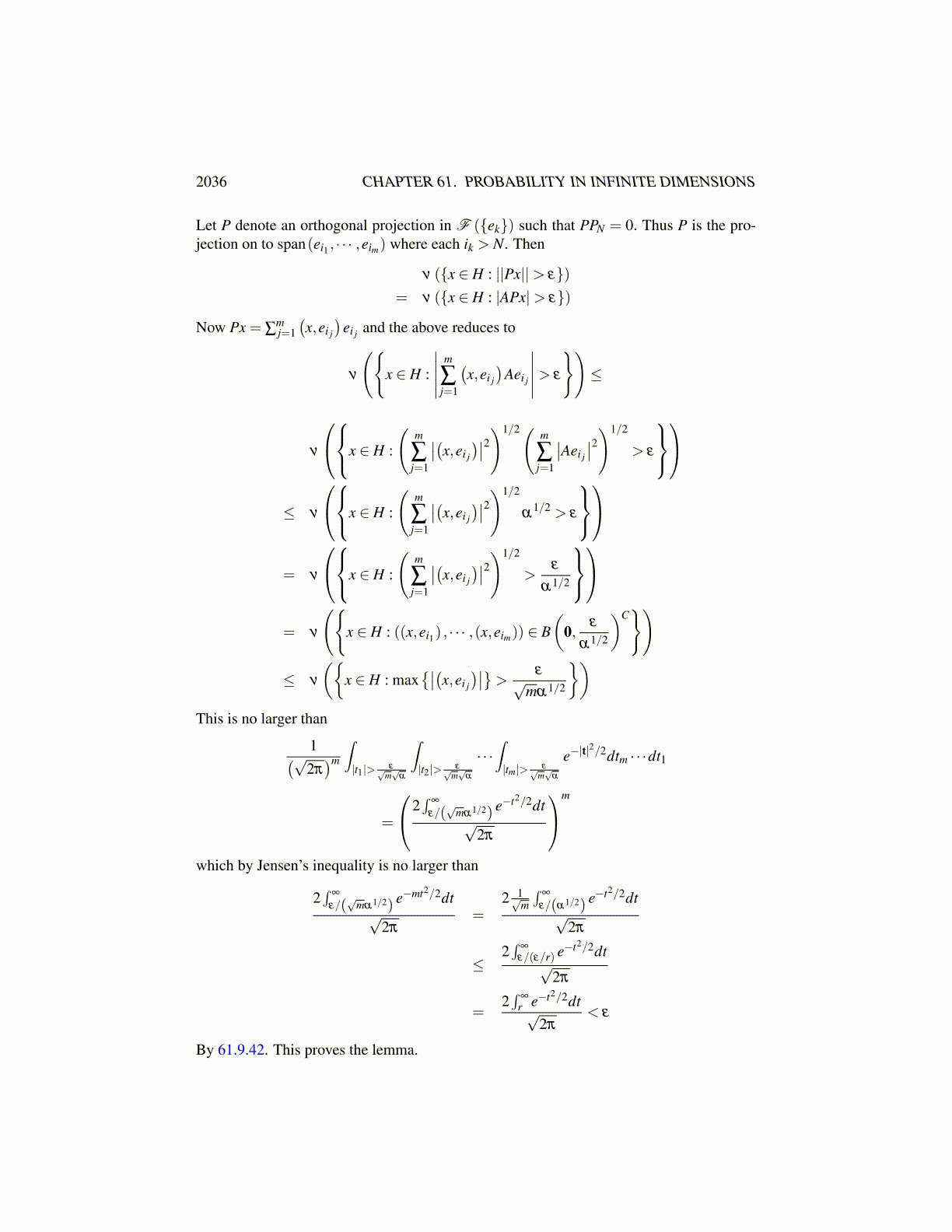
2036 CHAPTER 61. PROBABILITY IN INFINITE DIMENSIONS
many of the ek the following condition holds. For every ε > 0 there exists Pε ∈F ({en})such that if P ∈F ({en}) and PPε = 0, then
ν ({x ∈ H : ||Px||> ε})< ε.
Then ||·|| is called Gross measurable.
The following lemma is a fundamental result about Gross measurable norms. It is aboutthe continuity of ||·|| . It is obvious that with respect to the topology determined by ||·|| thatx→ ||x|| is continuous. However, it would be interesting if this were the case with respectto the topology determined by the norm on H, |·| . This lemma shows this is the case andso the funny condition above implies x→ ||x|| is a continuous, hence Borel measurablefunction.
Lemma 61.9.10 Let ||·|| be Gross measurable. Then there exists c > 0 such that
||x|| ≤ c |x|
for all x ∈ H. Furthermore, the above definition is well defined.
Proof: First it is important to consider the question whether the above definition is welldefined. To do this note that on PH, the two norms are equivalent because PH is a finitedimensional space. Let G = {y ∈ PH : ||y||> ε} so G is an open set in PH. Then
{x ∈ H : ||Px||> ε}
equals{x ∈ H : Px ∈ G}
which equals a set of the form{x ∈ H :
((x,ei1)H , · · · ,(x,eim)H
)∈ G′
}for G′ an open set in Rm and so everything makes sense in the above definition.
Now it is necessary to verify ||·|| ≤ c |·|. If it is not so, there exists e1 such that
||e1|| ≥ 1, |e1|= 1.
Suppose {ek}nk=1 have been chosen such that each is a unit vector in H and ||ek|| ≥ k. Then
considering span(e1, · · · ,en)⊥ if for every x ∈ span(e1, · · · ,en)
⊥ , ||x|| ≤ c |x| , then if z ∈His arbitrary, z = x+y where y ∈ span(e1, · · · ,en) and so since the two norms are equivalenton a finite dimensional subspace, there exists c′ corresponding to span(e1, · · · ,en) such that
||z||2 ≤ (||x||+ ||y||)2 ≤ 2 ||x||2 +2 ||y||2
≤ 2c2 |x|2 +2c′ |y|2
≤(2c2 +2c′2
)(|x|2 + |y|2
)=
(2c2 +2c′2
)|z|2